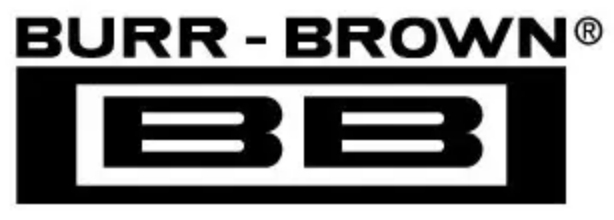APPLICATIONS INFORMATION
Figure 1 shows the basic connections required to operate the
OPT301. Applications with high-impedance power supplies
may require decoupling capacitors located close to the
device pins as shown. Output is zero volts with no light and
increases with increasing illumination.
If your light source is focused to a small area, be sure that
it is properly aimed to fall on the photodiode. If a narrowly
focused light source were to miss the photodiode area and
fall only on the op amp circuitry, the OPT301 would not
perform properly. The large (0.090
x
0.090 inch) photodiode
area allows easy positioning of narrowly focused light
sources. The photodiode area is easily visible—it appears
very dark compared to the surrounding active circuitry.
The incident angle of the light source also affects the
apparent sensitivity in uniform irradiance. For small incident
angles, the loss in sensitivity is simply due to the smaller
effective light gathering area of the photodiode (proportional
to the cosine of the angle). At a greater incident angle, light
is reflected and scattered by the side of the package. These
effects are shown in the typical performance curve
“Response vs Incident Angle.”
DARK ERRORS
The dark errors in the specification table include all sources.
The dominant error source is the input offset voltage of the
op amp. Photodiode dark current and input bias current of
the op amp are approximately 2pA and contribute virtually
no offset error at room temperature. Dark current and input
bias current double for each 10°C above 25°C. At 70°C, the
error current can be approximately 100pA. This would
produce a 1mV offset with R
F
= 10MΩ. The OPT301 is
useful with feedback resistors of 100MΩ or greater at room
temperature. The dark output voltage can be trimmed to
zero with the optional circuit shown in Figure 3.
C
EXT
2
1MΩ
(0V)
R
F
I
D
4
I
D
is proportional
to light intensity
(radiant power).
40pF
λ
I
D
75Ω
5
V
O
V
O
= I
D
R
F
OPT301
8
1
0.1µF 0.1µF
+15V
–15V
3
NOTE: Metal package
is internally connected
to common (Pin 8).
FIGURE 1. Basic Circuit Connections.
Photodiode current, I
D
, is proportional to the radiant power
or flux (in watts) falling on the photodiode. At a wavelength
of 650nm (visible red) the photodiode Responsivity, R
I
, is
approximately 0.45A/W. Responsivity at other wavelengths
is shown in the typical performance curve “Responsivity vs
Wavelength.”
The typical performance curve “Output Voltage vs Radiant
Power” shows the response throughout a wide range of
radiant power. The response curve “Output Voltage vs
Irradiance” is based on the photodiode area of 5.23
x
10
–6
m
2
.
The OPT301’s voltage output is the product of the photodiode
current times the feedback resistor, (I
D
R
F
). The internal
feedback resistor is laser trimmed to 1MΩ
±2%.
Using this
resistor, the output voltage responsivity, R
V
, is approximately
0.45V/µW at 650nm wavelength.
An external resistor can be used to set a different voltage
responsivity. For values of R
F
less than 1MΩ, an external
capacitor, C
EXT
, should be connected in parallel with R
F
(see
Figure 2). This capacitor eliminates gain peaking and prevents
instability. The value of C
EXT
can be read from the table in
Figure 2.
LIGHT SOURCE POSITIONING
The OPT301 is 100% tested with a light source that uniformly
illuminates the full area of the integrated circuit, including
the op amp. Although all IC amplifiers are light-sensitive to
some degree, the OPT301 op amp circuitry is designed to
minimize this effect. Sensitive junctions are shielded with
metal, and differential stages are cross-coupled. Furthermore,
the photodiode area is very large relative to the op amp input
circuitry making these effects negligible.
6
R
F
2
1MΩ
4
40pF
75Ω
λ
OPT301
8
1
V+
3
V–
5
V
O
= I
D
R
F
EXTERNAL R
F
100MΩ
10MΩ
1MΩ
330kΩ
100kΩ
33kΩ
10kΩ
C
EXT
(1)
(1)
(1)
30pF
130pF
180pF
350pF
NOTE: (1) No C
EXT
required.
FIGURE 2. Using External Feedback Resistor.
®
7
OPT301

 BURR-BROWN [ BURR-BROWN CORPORATION ]
BURR-BROWN [ BURR-BROWN CORPORATION ]